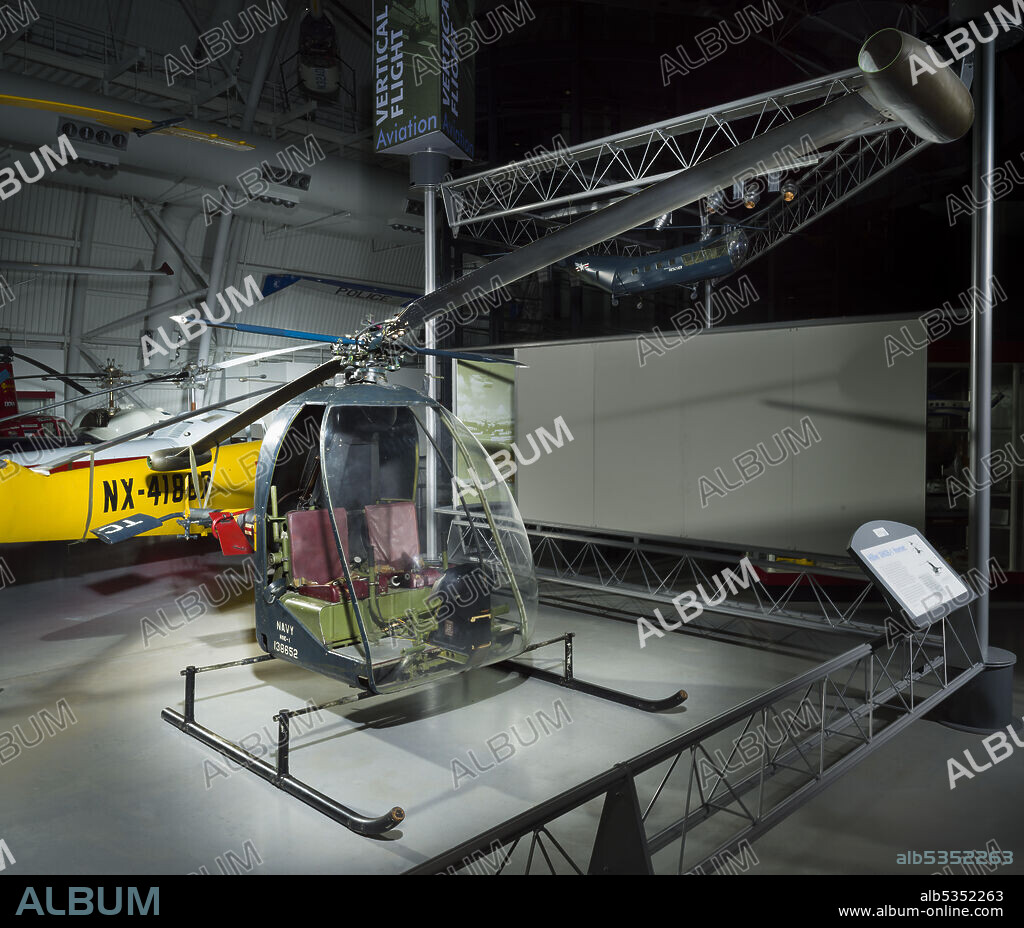alb5352263
UNITED HELICOPTERS INCORPORATED. Hiller XHOE-1 Hornet,1940s. Creator: United Helicopters Incorporated.

|
Add to another lightbox |
|
Add to another lightbox |



Author:
Title:
Hiller XHOE-1 Hornet,1940s. Creator: United Helicopters Incorporated.
Caption:
All aircraft designers attempt to maximize lifting power and reduce airframe weight. During the late 1940s, helicopter pioneers began to experiment with alternative propulsion methods that did not require heavy components such as tail rotor assemblies, drive shafts, main rotor clutches, transmissions, and engine cooling blowers. Without these items, a helicopter's useful load increases by a significant margin. These components are also potential failure points, making helicopters more fragile and more difficult to maintain. Yet another advantage is the substantial reduction in the cost to produce helicopters without this equipment. In 1948, Stanley Hiller began to experiment with ramjets mounted on the tips of the main rotor blade. He hoped to make small, ramjet-powered helicopters practical and affordable, and to eventually design and sell giant aerial cranes propelled by ramjets or jet turbine engines. The Hiller HOE-1 became the first production ramjet helicopter, and the Army and Navy flew a small number of these aircraft for a short time to test and evaluate the technology.
Personalities:
Credit:
Album / Heritage Art/Heritage Images
Releases:
Model: No - Property: No
Rights questions?
Rights questions?
Image size:
9265 x 7916 px | 209.8 MB
Print size:
78.4 x 67.0 cm | 30.9 x 26.4 in (300 dpi)
Keywords:
1940S • 20TH CENTURY • AIR AND SPACE MUSEUM • AIR TRANSPORT • AIRCRAFT • AIRPLANE • AMERICA • AMERICAN • AVIATION • CENTURY • COLOR • COLOUR • COUNTRY • CRAFT-ROTARY WING • DECADE • EDUCATION • EDUCATIONAL INSTITUTION • FLIGHT • FORTIES • HELICOPTER • HILLER • HORNET • LOCATION • NASM • NATIONAL AIR AND SPACE MUSEUM • OBJECT • OBJECTS • SCIENTIFIC INSTITUTION • SMITHSONIAN INSTITUTION • STANLEY HILLER JR. • STANLEY HILLER • STANLEY • TECHNOLOGY • TRANSPORT • TRANSPORTATION • UMBRELLA • UNITED HELICOPTERS INC. • UNITED HELICOPTERS INCORPORATED • UNITED STATES OF AMERICA • UNITED STATES • USA
 Pinterest
Pinterest Twitter
Twitter Facebook
Facebook Copy link
Copy link Email
Email

